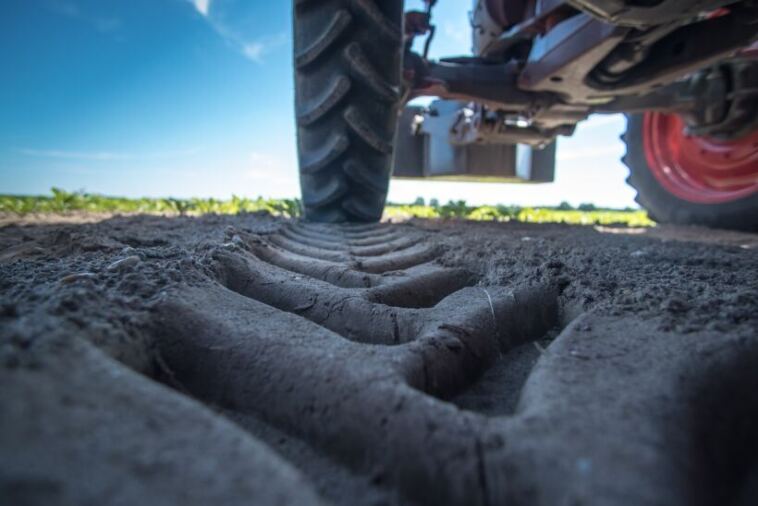- Like
- SHARE
- Digg
- Del
- Tumblr
- VKontakte
- Flattr
- Buffer
- Love This
- Save
- Odnoklassniki
- Meneame
- Blogger
- Amazon
- Yahoo Mail
- Gmail
- AOL
- Newsvine
- HackerNews
- Evernote
- MySpace
- Mail.ru
- Viadeo
- Line
- Comments
- Yummly
- SMS
- Viber
- Telegram
- JOIN
- Skype
- Facebook Messenger
- Kakao
- LiveJournal
- Yammer
- Edgar
- Fintel
- Mix
- Instapaper
- Copy Link
Improvements in technology have not only benefited the computer industry. Forestry mulching proves to be a highly effective method for land transformation across various needs.
Concerns about fire mitigation, optimal crop growth, or simply enhancing the land’s natural beauty can be addressed comprehensively through forestry mulching.
This article will explore the diverse benefits of forestry mulching, examining its crucial role in fire mitigation, weed control, storm cleanup, and landscaping.
If you want to understand more about the technology behind this and why forestry mulching is gaining popularity, continue reading.
Fire Mitigation
Forestry mulching plays a pivotal role in fire mitigation and forest management. Mulching helps retain soil moisture, reducing the risk of bushfires in moist environments. It is a natural barrier, preventing rapid water evaporation and nourishing vegetation. Regulating soil temperature, mulch diminishes the likelihood of spontaneous fires, especially during hot summer. So, a mini excavator forestry mulcher offers a safer alternative to controlled burns for underbrush clearance, reducing the risk of uncontrolled fires. It efficiently creates fire breaks, serving as a barrier against advancing fires.
Weed Growth and Pest Control
This mulching is potent against invasive species, addressing plant and animal intruders. Shredding invasive plants provides space for native species to thrive, aided by the mulch layer acting as a natural barrier. Furthermore, regular mulching suppresses invasive species over time, promoting permanent suppression without resorting to harmful herbicides. Mulching also denies pests their habitat by removing and shredding infested trees, effectively reducing their numbers.
Cleaning up Fences and Power Lines
Forestry mulching is instrumental in maintaining fence lines and power lines. It prevents overgrown vegetation from compromising fences, reducing the risk of damage and unwanted animal intrusion. Encroaching trees near power lines poses threats, and mulching efficiently clears vegetation without harming the environment. So, regular mulching ensures fire prevention along fences and safeguards properties.
Storm and Harvesting Cleanup
Forestry mulching is highly effective for storm and timber harvesting cleanup, avoiding costly offsite hauling. Mulching efficiently shreds fallen trees on-site, preventing soil damage from heavier machinery during soft post-storm terrains. It offers a safer alternative to pile burning for timber harvesting cleanup, eliminating risks associated with controlled burns.
Landscaping
It is an optimal method for landscaping with environmental and economic benefits. Reduced machinery use leads to a smaller carbon footprint, preserving the natural beauty and fertility of the terrain. Less machinery results in lower fuel consumption and reduced labor costs, making the process budget-friendly. Mulch acts as a protective layer, fostering new plant growth and enriching the soil, supporting a healthier landscape. So, precision clearing allows property owners to tailor their landscape, enhancing property value through sustainable practices.
Maintaining Garden Beds
Fresh mulch is essential for effective garden bed maintenance, protecting against frost damage, slow-release nutrients, and weed suppression. Mulching reduces the need for frequent watering by preventing rapid water evaporation from the soil. It ensures consistent moisture access for plants, promoting optimal growth conditions.
Agricultural Cultivation
Forestry mulching revolutionizes agricultural land preparation by clearing invasive species, promoting crop growth, and reducing the need for artificial fertilizers. The decomposing mulch layer enriches the soil, offering slow-release nutrition and minimizing environmental damage. Mulchers from Torrent Mulchers help reserve root systems through shredding, ensuring minimal soil disturbance, reducing the risk of soil erosion, and maintaining soil structure.
The Bottom Line
Forestry mulching is an innovative land management approach that balances environmental responsibility with practical benefits. From mitigating bushfire risks to enhancing agricultural productivity, its multifaceted advantages make it a strategic choice for a greener, safer, and more prosperous future. Embracing forestry mulching is not merely a choice but an investment in the future of our land. Mulching offers numerous benefits, presenting a cost-effective and environmentally friendly method for land clearance. Utilizing a single machine, such as a wood chipper, to generate wood chips facilitates vegetation removal and enhances soil fertility and composition.


